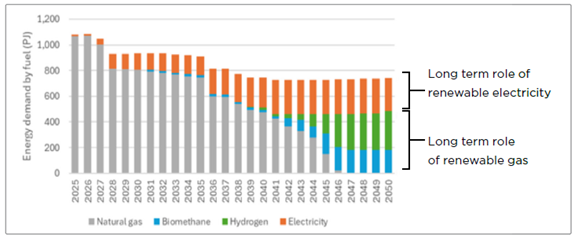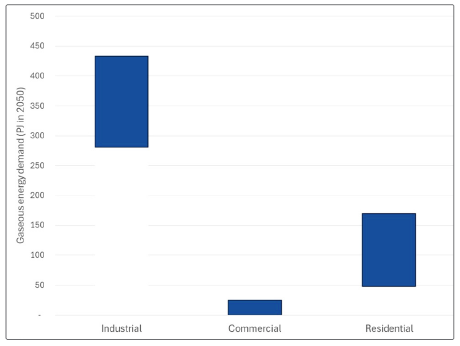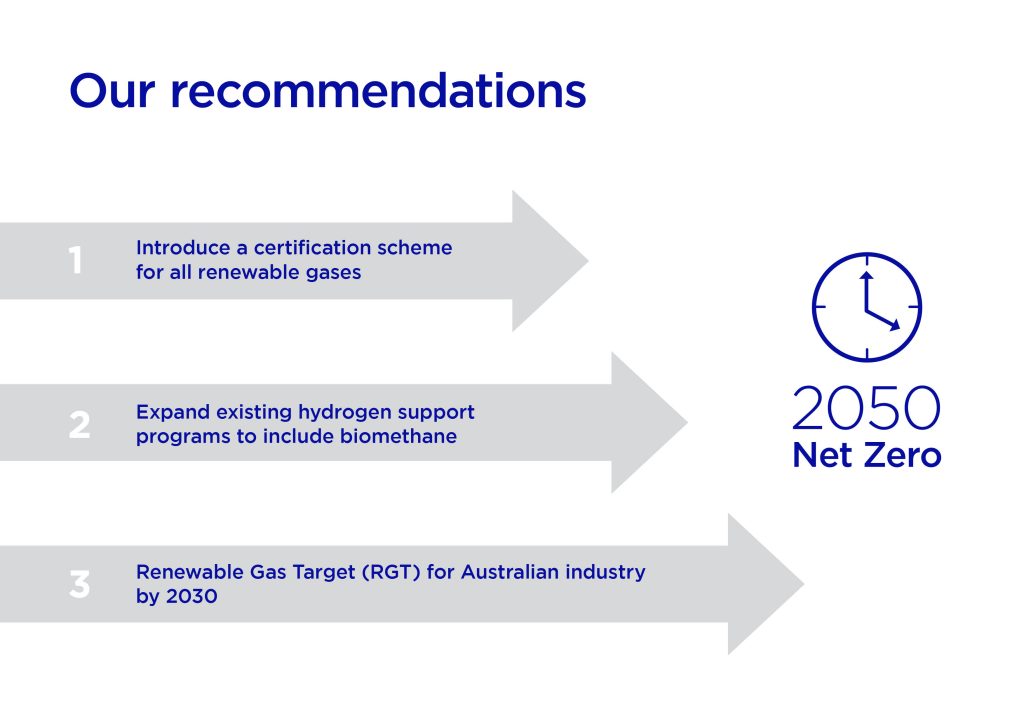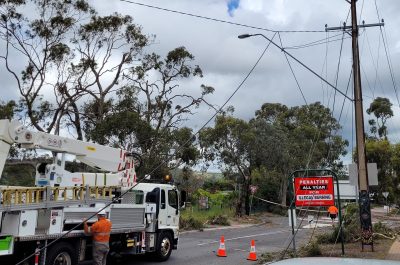Can our renewable gas pathway support a future made in Australia?
The decarbonisation of Australia’s gas system is a complex challenge that enlivens furious debate.
Currently, around 70 per cent of Australia’s gas use occurs in manufacturing, industry and as feedstock, around 15 per cent is used for power generation and around 10 per cent is used in homes. From this, it is clear that the focus should be on developing a renewable gas pathway focusing on the industrial sector.
Renewable gas pathway
Earlier in 2024, ACIL Allen[1] modelled the least-cost pathway to decarbonise gas in Australia and covered the industrial, commercial and residential sectors.

Figure 1: Least-cost decarbonisation pathway for Australia’s gas use (Source: ACIL Allen (2024)
The analysis found:
- Both electrification and renewable gases (both biomethane and green hydrogen) have a role to play in the lowest-cost pathway to decarbonisation.
- Energy efficiency improvements from electrification reduces the total energy demand needed to deliver the same services, and
- Early opportunities are centred on electrification in some industrial processes (mainly conversion of LNG trains that are undergoing capital equipment upgrades) and later (from 2040) opportunities will require renewable gases. While this signifies hard-to-electrify sectors are decarbonised at the later stage of our transition to net zero, it shows that we do not get there by 2050 without a reliable renewable gas option as part of the transition.
The future demand for renewable gases is most robust in the industrial sector because many industrial processes either do not have an electrification alternative, or the electrification alternative is far too expensive to justify.

Figure 2: Projected range of gaseous fuel demand by sector in 2050 (Source: ACIL Allen (2024); ENA analysis).
ACIL Allen found that the fuel mix in the residential sector was highly dependent on the rate of technological development and cost reductions in heat pumps, green hydrogen or biomethane.
We are well and truly immersed in the energy transition with the lower hanging fruit – such as rooftop PV – having making significant strides. The development and deployment of that technology has heavily relied on supportive policy frameworks.
As we move to tackle the more challenging or ‘hard-to-abate’ sectors – such as gas for industry or long-term energy storage – further government support will be needed. Based on research by KPMG[2], ENA has identified three key policy recommendations to develop the renewable gas market.

1 Introduce a certification scheme for all renewable gases
ENA recognises that there are various renewable gas certification schemes. However, a limitation of all these schemes is that they do not recognise a market-based approach to renewable gases injected into gas pipelines and networks. This approach will allow industrial customers to purchase the emissions benefits from renewable gas being blended into the network. The process is similar to how businesses currently can purchase the emission benefits from renewable electricity through Large-Scale Generation Certificates[3]. A market-based approach for renewable gas will require a new methodology to be developed under the National Greenhouse and Energy Reporting framework.
2 Expand existing hydrogen support programs to include biomethane
The initial Hydrogen Headstart[4] funding was focused on ammonia production. The 2025 Budget included additional support for hydrogen beyond the initial Hydrogen Headstart funding round for other industries that can use hydrogen, but did not include biomethane. Biomethane is an early opportunity to decarbonise gas with Australia’s bioenergy roadmap[5] indicating that biomethane could present between 9 and 33 per cent of Australia’s gas demand by 2050, depending on the level of targeted support. ENA will continue to advocate for additional funding to biomethane.
3 Consider Renewable Gas Target (RGT) for Australian industry by 2030
With gas emissions reduction strategies being considered through the six sectoral plans as part of Australia’s Net Zero Plan, ENA recommends that this include policy design for an RGT by sector, so that appropriate targets can be set in place by 2030. Setting an RGT will also drive innovation, reduce costs through economies of scale, and accelerate the development of renewable gas infrastructure and supply chains. An RGT by 2030 will complement the market-based approach to renewable gas and support the development of the renewable gas sector to meet the growing demand from the mid 2030’s, as per the ACIL Allen modelling.
Summary
Australia’s industry is highly reliant on natural gas and will need to transition to renewable electricity and renewable gases to contribute to Australia’s emission reduction goals.
Supportive policies will be needed to develop a renewable gas market. A focus on decarbonisation of industry will help to achieve economies of scale and accelerate the transition of the rest of the economy.
Read Energy Networks Australia’s paper: Renewable gas for a future made in Australia.
[1] ACIL Allen (2024), Renewable Gas Target: Delivering lower cost decarbonisation for gas customers and the Australian economy
[2] KPMG (2023), Renewable gas: policy options to support Australia’s decarbonisation journey
[3] https://cer.gov.au/schemes/renewable-energy-target/large-scale-renewable-energy-target/large-scale-generation-2
[4] https://www.dcceew.gov.au/energy/hydrogen/hydrogen-headstart-program
[5] ARENA (2021), Australia’s Bioenergy Roadmap



